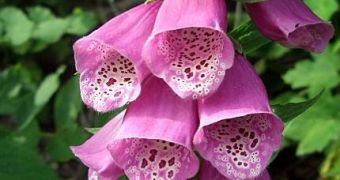According to a new scientific study from researchers in China, it may be that raindrops play a much larger role in nature than first believed. The experts theorize that the small droplets may have been one of the largest driving forces behind the evolution of flowers, and their shapes. They believe that some species are adapted to areas of denser precipitations, and not be requiring more moist to function, but by having specialized routes through which to eliminate excess water, and to prevent it from accumulating, the BBC News reports.
In a study conducted on more than 80 species of flowers, it was determined that the different shapes and structures that the plants developed over millions of years are to some extent designed to prevent their pollen from getting wet. If this happens, wind cannot carry it away, and fewer flowers multiply. To prevent this, they have evolved these defense mechanisms, which significantly improve their odds of perpetuating their species year after year, the Chinese team believes.
The raindrops may also be the main reasons why many species in rainy areas have either developed droopy flowers – with their openings facing downwards – or the ability to close at the first sign of water. All is done in the name of pollen preservation, the team believes. “Animals as well as ourselves like to be sheltered when it rains. We were wondering how flowers reduce rain effects on pollen grains, given that plants are immobile,” says Shuang-Quan Huang, a botanist at the Wuhan University. He was joined in the work by colleague Yun-Yun Mao.
“Some plants shelter their pollen grains through a change in floral orientation or closing their corolla on rainy days. For example, tulip flowers close their petals rapidly when rains come,” the expert adds. Of the 80 analyzed species, 20 protected their pollen by “design elements” (the shape of the flower, the orientation of the flower opening and so on), while about 44 exposed their pollen completely to the weather. Of those, about 13 were shown to have developed pollen that is extremely resistant to water.
“We were surprised that some plants without pollen protection structures develop water resistant pollen. The finding of a high proportion of resistant pollen in no-protection species suggests that selection by rain contact favors pollen resistance to water,” Huang explains. The team now plans to focus its efforts on determining whether flowers protect their nectar from rain too, and also on discovering if indeed more plant species in rainy areas bloom downwards, droop, or have developed nearly-instant petal-closing skills.

 14 DAY TRIAL //
14 DAY TRIAL //